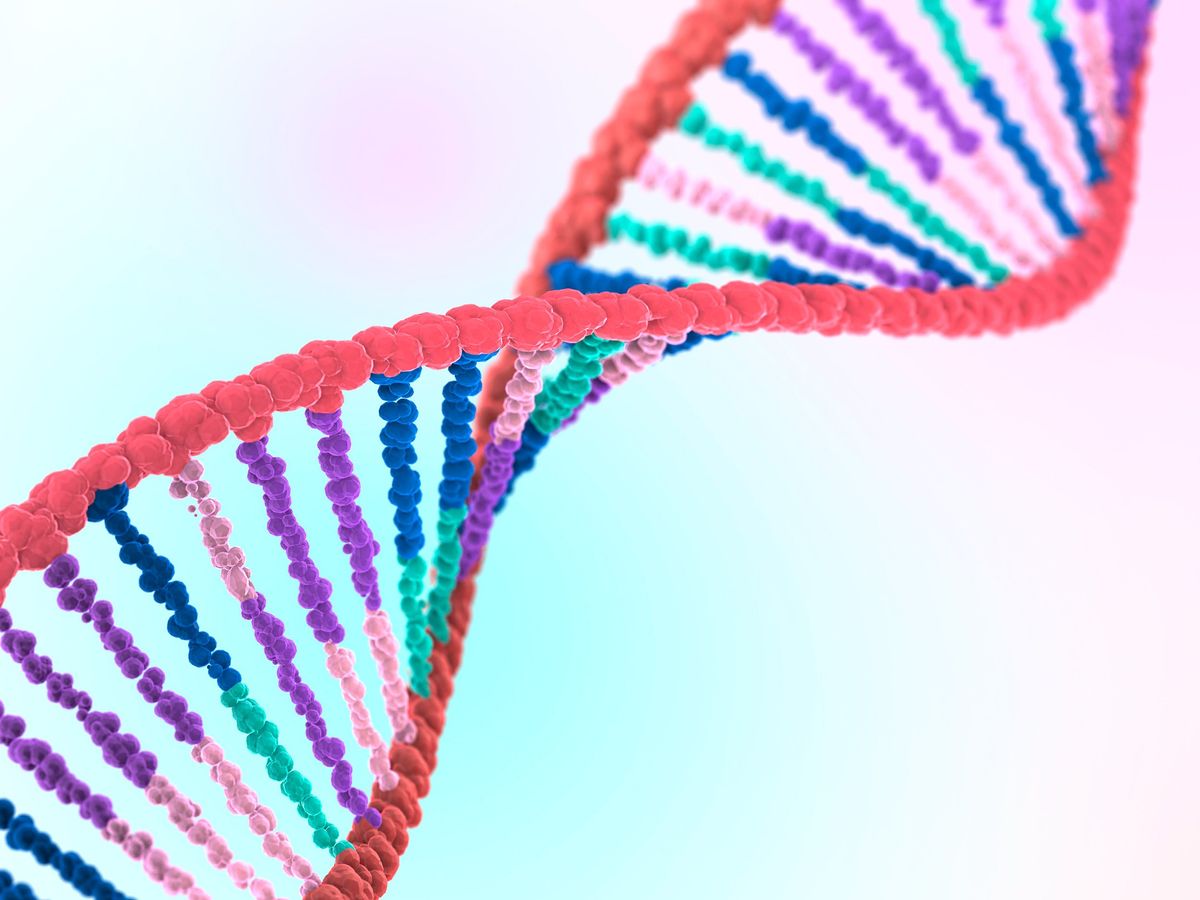Nanopore sequencing has, over the past three decades, become the most affordable, efficient way to sequence DNA. The method, which involves pulling DNA strands through a membrane via channels just nanometers wide, can read much longer DNA sequences than is possible with traditional techniques. Nanopore sequencing allows scientists to analyze complex parts of the genome, but while the technique is excellent at parsing DNA, it does not work with other biological molecules that can be markers for diseases.
Now, researchers at Imperial College London have found a way around that limitation. By using small pieces of DNA as a barcode for other biomolecules, the researchers have harnessed the power of nanopore sequencing to identify dozens of different disease biomarkers in blood samples. In a paper published on 25 September in the journal Nature Nanotechnology, the team demonstrates that the strategy can simultaneously detect 40 biomarkers from human blood serum, including proteins, small RNA pieces called microRNA, and chemicals transmitted by brain cells (neurotransmitters).
The researchers show that their technique can detect 40 different biomarkers in human blood samples. But they are now working on detecting 100.
The advance opens a door to personalized medicine, and could allow doctors to accurately diagnose cancer and heart disease early and customize treatment for patients. “A lot of components of this technology existed before,” says Aleksandar Ivanov, a professor of chemistry at Imperial College London and a member of the research team behind the advancement. “It was the synergy of bringing it all together that makes this work important. This includes the precision with which you sequence, the ability to control the transport of the analyte, and also elements of machine learning to be able to reconstruct the signal.”
Ivanov, chemistry professor Joshua Edel, and their team at Imperial College worked with researchers at Oxford Nanopore Technologies, which makes the world’s only commercial nanopore sequencer. The machine generates an electric field to pull long DNA strands through pores narrower than 3 nanometers. As a strand moves through a pore, the pore restricts the passage of ions present in the sample, causing tiny changes in the electric field that can be used to identify individual nucleotides—the DNA bases commonly known by the letters A, C, G, and T.
But other biomolecules are either too small to be detected by nanopore sequencing, says Ivanov, or so big that they don’t pass through. Even if they can squeeze through the pores, the signals produced by the sequencer can be nonspecific, he says. Two proteins, for instance, can have similar electronic signatures but completely different biological functions.
To address the problem, the team made small, 30-nucleotide-long DNA snippets that acted like unique barcodes for different biomarkers. They connected each barcode to special “probe” molecules that bind to specific disease biomarkers, whether that’s a protein or a neurotransmitter or something else. After adding these DNA barcode probes to a blood sample, the researchers put it through the nanopore sequencer.
That’s when the machine-learning algorithms kick in. The team trained algorithms to identify the nucleic acid sequence of each unique barcode from the jumble of signals created as multiple barcodes from different biomarkers are read simultaneously.
“We use these probes to fish out molecules of interest in the sample,” says Ivanov. “We know which barcode corresponds to which probe. This allows us to detect whether a molecule is present in solution or not. In a way we are fingerprinting what’s inside the solution.”
“It was the synergy of bringing it all together that makes this work important. This includes the precision with which you sequence, the ability to control the transport of the analyte, and also elements of machine learning to be able to reconstruct the signal.” —Aleksandar Ivanov, professor of chemistry, Imperial College London
Combining DNA bar coding and nanopore sequencing makes for a powerful technique by pairing both selectivity and sensitivity to more effectively screen for diseases, says Edel. “In the context of personalized [medicine] and being able to perform more effective diagnostics and screening, there are two aspects at play. One is getting a better snapshot of a patient by detecting an array of biomarkers. And for some diseases, biomarkers—especially in the early stages—are found at very low concentration. So being able to detect on an individual basis at low concentrations is absolutely critical.”
In their paper, the researchers show that their technique can detect 40 different biomarkers in human blood samples. But they are now working on detecting 100, says Edel. “In terms of upper limit, it’s likely closer to 1,000,” he says. “That’s the bigger picture, long-term vision.”
Prachi Patel is a freelance journalist based in Pittsburgh. She writes about energy, biotechnology, materials science, nanotechnology, and computing.



